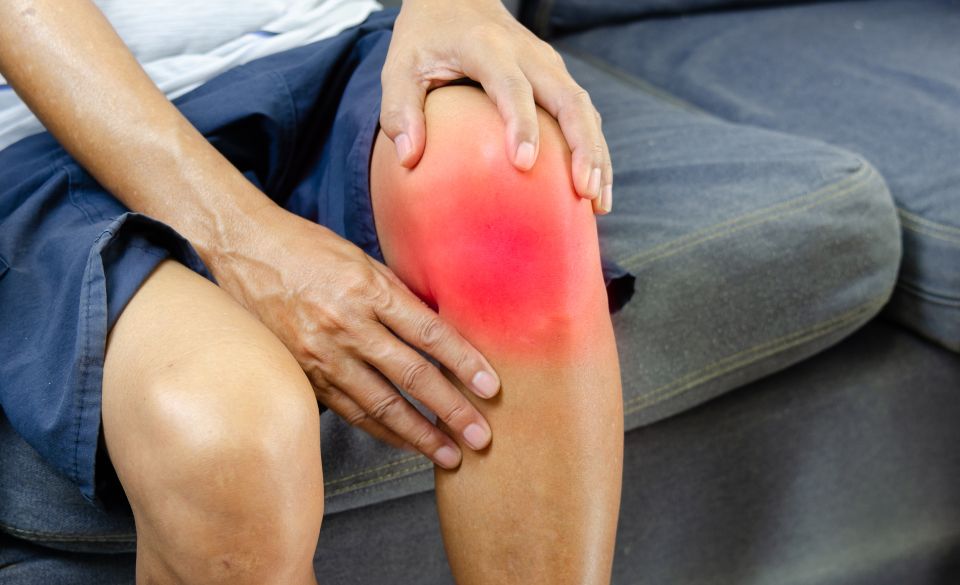
Best Stretches For Runners Knee Pain
Page Contents
Dealing with knee pain can be a real struggle, especially if it’s holding you back from doing the activities you love. But fear not! In this blog post, we’ll explore the power of stretching to help alleviate knee pain and get you back on track. Whether you’re an athlete, a runner, or just someone dealing with knee discomfort, these best stretches for knee pain might be your ticket to finding some much-needed relief.
Can stretching help runners knee pain?
Stretching can be beneficial in helping to relieve knee pain and improve overall knee health. When done correctly and as part of a comprehensive approach to managing knee pain, stretching can play a crucial role in reducing discomfort and promoting better function of the knee joint. Here are some ways in which stretching can help with knee pain:
1. Improved Flexibility and Range of Motion
Regular stretching can help increase flexibility in the muscles and tendons surrounding the knee joint. Improved flexibility allows the knee to move more freely and with a greater range of motion, reducing the feeling of stiffness and tightness that often accompanies knee pain.
2. Reduced Muscle Tension and Stress
Stretching helps release tension in the muscles around the knee, such as the quadriceps, hamstrings, and calves. Loosening these muscles can alleviate stress on the knee joint and provide relief from discomfort.
3. Enhanced Blood Flow
Stretching promotes better blood circulation to the knee area, delivering oxygen and nutrients to the tissues. Increased blood flow can aid in the healing process and reduce inflammation, which may be contributing to knee pain.
4. Strengthening of Supporting Muscles
Certain stretching exercises can also help strengthen the muscles that support the knee joint. Building strength in the quadriceps and hamstrings, for example, can provide better stability and protection for the knee during movement.
5. Improved Posture and Alignment
Stretching can help address muscle imbalances that may contribute to knee pain. By targeting specific muscles, such as the hip flexors and glutes, stretching can promote better posture and alignment, which can reduce unnecessary stress on the knee joint.
It’s important to note that while stretching can be beneficial, it should be done in a controlled and gentle manner. Avoid forcing the knee into positions that cause pain or discomfort, and never bounce or jerk during stretches. If you’re experiencing persistent or severe knee pain, it’s essential to consult with a healthcare professional or a physical therapist to determine the underlying cause and receive appropriate guidance on stretching exercises tailored to your specific needs.
Should you stretch a strained knee?
Stretching a strained knee requires caution and should be approached with care. When dealing with a strained knee or any type of knee injury, it’s essential to consult with a healthcare professional or a physical therapist before attempting any stretching exercises. The severity and specific nature of the strain will determine whether stretching is appropriate and which stretches, if any, are safe to perform.
In some cases, gentle and controlled stretching may be recommended as part of the rehabilitation process for a strained knee. Stretching can help maintain flexibility in the surrounding muscles, prevent stiffness, and promote blood flow to the injured area, which aids in the healing process. However, the wrong type or excessive stretching can exacerbate the strain and delay recovery.
Here are some guidelines for stretching a strained knee:
Consult with a Professional: Always seek guidance from a healthcare professional or a physical therapist before attempting any stretches for a strained knee. They can assess the injury’s severity and provide personalized recommendations based on your condition.
Follow a Gradual Approach: If stretching is deemed appropriate for your strained knee, start with gentle and low-impact stretches. Avoid any movements or positions that cause pain or discomfort.
Avoid Bouncing or Overstretching: Never bounce or force the knee into stretches, as this can put additional stress on the already injured area. Hold stretches for a short duration, and only go as far as feels comfortable.
Focus on Gentle Range of Motion: Gentle range-of-motion exercises, such as ankle circles and knee bends, may be beneficial to keep the joint mobile without putting excessive strain on it.
RICE Method: Remember the RICE method for managing acute injuries: Rest, Ice, Compression, and Elevation. Rest the knee, apply ice to reduce swelling, use compression to support the knee, and elevate the leg to minimize inflammation.
Avoid Weight-Bearing Stretches: Steer clear of weight-bearing stretches that put pressure on the injured knee. Opt for seated or lying-down stretches that reduce the load on the joint.
Listen to Your Body: Pay close attention to how your knee responds to stretching. If you experience increased pain or discomfort, stop immediately and consult with your healthcare professional.
Ultimately, the priority with a strained knee is to allow it to heal properly. If stretching is part of the rehabilitation plan, ensure that it is done under the guidance of a professional and that you follow their instructions diligently. Always err on the side of caution and prioritize rest and recovery to give your strained knee the best chance to heal fully.
10 Exercises to Help Relieve Runners Knee Pain
1. Quadriceps Stretch
Stand tall and hold onto a chair or wall for balance.
Bend one knee and bring your heel towards your glutes.
Gently hold your ankle with your hand, keeping your knees close together.
Hold the stretch for 20-30 seconds and switch sides.
2. Hamstring Stretch
Sit on the floor with one leg extended and the other bent.
Reach for your extended foot, keeping your back straight.
Hold the stretch for 20-30 seconds and switch sides.
3. Calf Stretch
Stand facing a wall and place your hands on it.
Step one foot back and press the heel into the floor.
Feel the stretch in your calf muscle and hold for 20-30 seconds on each leg.
4. Inner Thigh Stretch
Sit on the floor with your legs extended wide.
Lean to one side, reaching for your foot while keeping the opposite hand on the floor for support.
Hold for 20-30 seconds on each side.
5. IT Band Stretch
Stand with one leg crossed behind the other.
Lean to the side of the crossed leg, feeling the stretch along the outer thigh.
Hold for 20-30 seconds on each side.
6. Piriformis Stretch
Lie on your back and cross one ankle over the opposite knee.
Reach your hands behind the thigh of the bottom leg and pull towards your chest.
Hold for 20-30 seconds on each side.
7. Seated Hamstring Stretch
Sit on the edge of a chair with one leg extended straight in front of you.
Flex your foot and lean slightly forward from your hips, reaching towards your toes.
Hold the stretch for 20-30 seconds and switch legs.
8. Hip Flexor Stretch
Kneel on one knee with the other foot in front, forming a 90-degree angle with your knee.
Shift your weight slightly forward, feeling the stretch in the front of your hip and thigh.
Hold for 20-30 seconds on each leg.
9. Glute Stretch
Lie on your back with both knees bent.
Cross one ankle over the opposite knee and gently pull the bottom leg towards your chest.
Hold for 20-30 seconds on each side.
10. Standing Quad Stretch
Stand tall and hold onto a chair or wall for support.
Bend one knee and bring your heel towards your glutes, holding it with your hand.
Hold the stretch for 20-30 seconds and switch sides.
Perform these stretches regularly and listen to your body. Stretching should not cause pain; it should feel like a gentle pull in the targeted muscle. If you experience any discomfort or have a history of knee issues, consult with a healthcare professional or physical therapist before attempting these stretches. Stretching, when done correctly, can be a fantastic tool in relieving knee pain and promoting overall knee health.
Incorporating Stretching into Your Routine
Now that you have a list of effective knee stretches, it’s time to incorporate them into your daily routine. Consistency is key to reaping the benefits of these stretches and finding relief from knee pain. Here are some tips to help you get started:
1. Warm-Up First: Before diving into the stretches, warm up your body with some light aerobic activity, such as walking or gentle cycling. Warm muscles are more pliable and responsive to stretching.
2. Hold Each Stretch: When performing the stretches, hold each position for 20-30 seconds. Avoid bouncing or jerking during the stretch, as this can lead to injury.
3. Breathe and Relax: While stretching, focus on your breathing and allow your body to relax into the stretch. Avoid tensing up or holding your breath.
4. Listen to Your Body: If a stretch causes pain or discomfort beyond a mild pulling sensation, stop immediately. Never force a stretch that feels too intense.
5. Stretch Both Sides: Be sure to stretch both sides of your body equally to maintain balance and symmetry in your muscles.
6. Regularity is Key: Aim to incorporate these stretches into your routine at least 2-3 times per week. Consistency will help improve flexibility and provide lasting relief.
7. Modify as Needed: If you have difficulty with any of the stretches or need additional support, consider using props like yoga blocks or straps to assist you.
8. Complement with Strength Exercises: Alongside stretching, consider adding strengthening exercises for the muscles around your knees. Strengthening exercises can provide additional support to the knee joint.
9. Consider Low-Impact Activities: In addition to stretching, engaging in low-impact activities like swimming or cycling can also be beneficial for knee health.
10. Seek Professional Guidance: If you have a history of knee issues or chronic pain, it’s essential to consult with a healthcare professional or a physical therapist. They can provide personalized recommendations and ensure you’re performing the stretches correctly.
Remember, stretching alone may not completely resolve knee pain if there are underlying issues. If knee pain persists or worsens, seek professional guidance for a comprehensive assessment and treatment plan.
Final Words
Incorporating these effective knee stretches into your routine can be a game-changer in managing knee pain and promoting better knee health. Stretching is a proactive approach to supporting your knees and maintaining flexibility as you age.
Consistency is key to reaping the benefits of these stretches and finding relief from knee pain. When performing the stretches, hold each position for 20-30 seconds, avoiding bouncing or jerking during the stretch. Remember to listen to your body; if a stretch causes pain or discomfort beyond a mild pulling sensation, stop immediately. Be sure to stretch both sides of your body equally to maintain balance and symmetry in your muscles.
To complement these stretches, consider adding strengthening exercises for the muscles around your knees. Strengthening exercises can provide additional support to the knee joint. Alongside stretching, engaging in low-impact activities like swimming or cycling can also be beneficial for knee health. If you have a history of knee issues or chronic pain, it’s essential to consult with a healthcare professional or a physical therapist for personalized recommendations and to ensure you’re performing the stretches correctly.
Aim to incorporate these stretches into your routine at least 2-3 times per week. Regularity will help improve flexibility and provide lasting relief. If knee pain persists or worsens, seek professional guidance for a comprehensive assessment and treatment plan. Remember, taking care of your knees through stretching and proper exercise is a proactive step towards overall knee health. Happy stretching and here’s to a life with healthier, pain-free knees!




